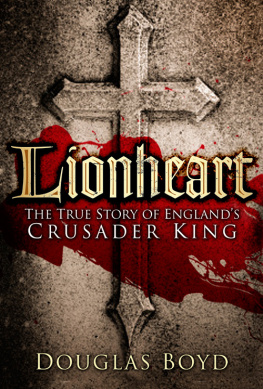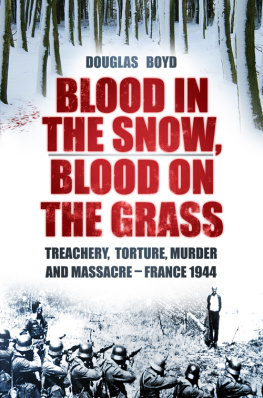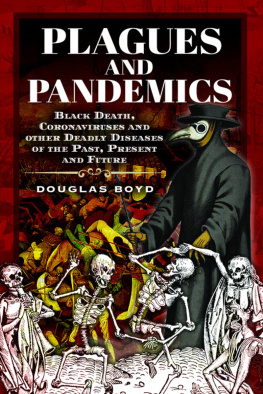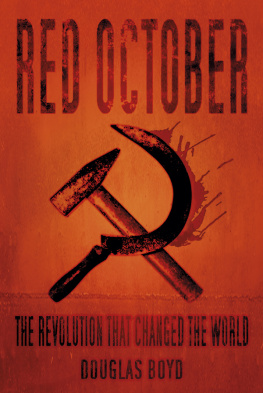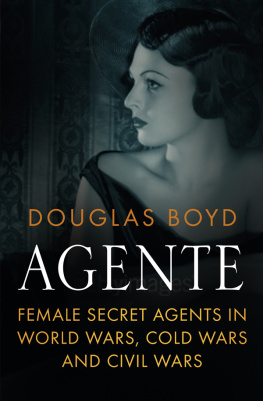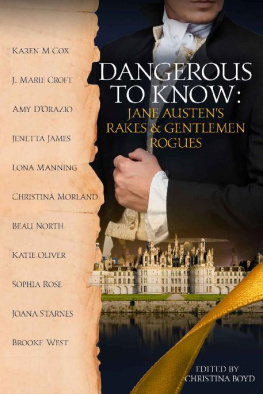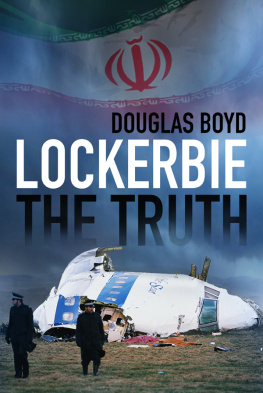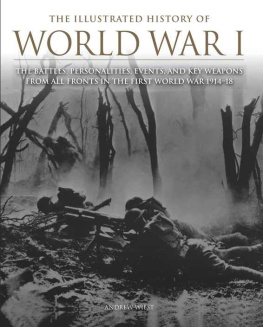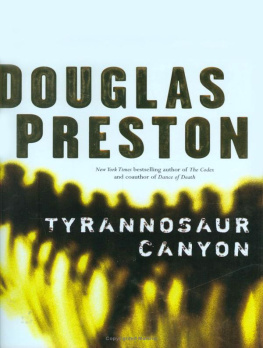Douglas Boyd - The Other First World War: The Blood-Soaked Russian Fronts 1914–1922
Here you can read online Douglas Boyd - The Other First World War: The Blood-Soaked Russian Fronts 1914–1922 full text of the book (entire story) in english for free. Download pdf and epub, get meaning, cover and reviews about this ebook. year: 2014, publisher: The History Press, genre: History. Description of the work, (preface) as well as reviews are available. Best literature library LitArk.com created for fans of good reading and offers a wide selection of genres:
Romance novel
Science fiction
Adventure
Detective
Science
History
Home and family
Prose
Art
Politics
Computer
Non-fiction
Religion
Business
Children
Humor
Choose a favorite category and find really read worthwhile books. Enjoy immersion in the world of imagination, feel the emotions of the characters or learn something new for yourself, make an fascinating discovery.
- Book:The Other First World War: The Blood-Soaked Russian Fronts 1914–1922
- Author:
- Publisher:The History Press
- Genre:
- Year:2014
- Rating:3 / 5
- Favourites:Add to favourites
- Your mark:
- 60
- 1
- 2
- 3
- 4
- 5
The Other First World War: The Blood-Soaked Russian Fronts 1914–1922: summary, description and annotation
We offer to read an annotation, description, summary or preface (depends on what the author of the book "The Other First World War: The Blood-Soaked Russian Fronts 1914–1922" wrote himself). If you haven't found the necessary information about the book — write in the comments, we will try to find it.
The Other First World War: The Blood-Soaked Russian Fronts 1914–1922 — read online for free the complete book (whole text) full work
Below is the text of the book, divided by pages. System saving the place of the last page read, allows you to conveniently read the book "The Other First World War: The Blood-Soaked Russian Fronts 1914–1922" online for free, without having to search again every time where you left off. Put a bookmark, and you can go to the page where you finished reading at any time.
Font size:
Interval:
Bookmark:

ALSO BY DOUGLAS BOYD
H ISTORIES
April Queen, Eleanor of Aquitaine
Voices from the Dark Years
The French Foreign Legion
The Kremlin Conspiracy
Blood in the Snow, Blood on the Grass
De Gaulle: The Man Who Defied Six US Presidents
Normandy in the Time of Darkness
Lionheart: The True Story of Englands Crusader King
NOVELS
The Eagle and the Snake
The Honour and the Glory
The Truth and the Lies
The Virgin and the Fool
The Fiddler and the Ferret
CONTENTS
BSF | British Salonika Force |
CP | Central Powers, German and Austro-Hungarian empires 191418 |
CSEF | Canadian Siberian Expeditionary Force |
HID | Hungarian Reserve or Honved Infantry Divisions |
IVF | Imperatorskii Voyenno-Vozdushny Flot Imperial Russian Air Force |
NKVD | Peoples Commissariat for Internal Affairs Soviet law enforcement agency |
OHL | Oberste Heeresleitung German High Command |
OAK | Oberarmeekomando OHL counterpart in Vienna |

A t the height of the Cold War 18-year-old men in Britain had to do two years obligatory military service. My first year in RAF uniform was spent at Joint Services School for Linguists (JSSL), an extraordinary institution run by the three armed services but staffed by civilian instructors who turned out three intakes a year of linguist/technicians capable of real-time eavesdropping on radio transmissions of Soviet ground, air and naval forces. In those pre-satellite days, the theory was that analysis at Government Communications Headquarters (GCHQ) of our handwritten logs would ensure NATO was prepared for any Warsaw pact invasion. Happily, it was never put to the test.
Our instructors at JSSL included a Red Army general, a Czech officer who had flown in the RAF during World War Two, an Estonian divorce lawyer, a Russian prince who became an Orthodox monk, a few rather nutty Russian ladies and Poles, Ukrainians and Balts many of whom had survived terrible experiences during and after the October Revolution, the purges that followed, the Second World War and the Cold War. The ten months spent in daily contact with them taught us much more than just a language. Some students fell in love with Russian literature; others with the language; in me it inspired a fascination with Russian history, especially the bloody conflict between the Russian Empire and the Central Powers in Eastern Europe 19141918.
In contrast with the well-documented hostilities on the Western Front, this other First World War has been largely a mystery to the English-speaking public. Place names like Passchendaele, Ypres and Vimy Ridge were tragically well known to the general public after the Great War, as it was called, yet it would be hard for a Westerner to point on a map to Durrs, Przemyl, Strij or Dvinsk, although names of some sites of appalling atrocity like Kosovo have sadly become familiar, and for the same reasons, much more recently. Researching sources in the combatant countries can be frustrating because even Russian military historians refer to this conflict as zabytaya voyna the forgotten war. It is, for them, overshadowed by the Revolution that ended it and the bitter civil war that cost millions more lives immediately afterwards, followed by the famines of collectivisation that killed yet further millions and the Stalinist purges and the deaths of 30 million Soviet citizens in the Second World War.
The conflict along the frontiers between the Russian Empire and the Central Powers the German and Austro-Hungarian empires was called by Westerners the eastern front. For those millions who fought and died there, it was a war bitterly contested on three main fronts stretching for a thousand miles and named from the perspective of St Petersburg/Petrograd, the northern front, the western front and the south-western front. For clarity in this book, these names will be used for the Russian fronts and the hostilities in Western Europe will be called the Western Front.
The conflicting priorities of the Russian army commanders seemed sometimes devoid of any common strategy. As far as the Western Allies were concerned, the role of Russia was to drain manpower away from the enemy forces on the Western Front at critical moments when the full force of the German armies might have broken through the Allied lines or blocked a new offensive.
Understanding of the Russian war is made difficult because many place names have changed and borders shifted: Lemberg in Austrian Galicia became Ukrainian Lviv, then Polish Lww and is again Lviv in Ukraine; Memel, then in East Prussia, is now Klaipeda in Lithuania, and so on. But whats in a name? as Shakespeare asked. Nearly 9 million men marched off to fight for King and Country in the First World War, and one in ten paid with his life, yet Britains reigning monarch King George V bore the very German family name of Saxe-Coburg und Gotha until 25 April 1917, when it was thought more politic to change it to the very British House of Windsor. For the same reasons his relatives the Battenburgs likewise changed their German name by translating it literally into English as Mountbatten.
The official war in Eastern Europe ended eight months earlier than in the West after Berlin resorted to what is now called a deniable dirty trick, smuggling Vladimir I. Ulyanov, aka Lenin, out of neutral Switzerland and back to Russia, resulting in his countrys premature exit from the war under the Treaty of Brest-Litovsk, signed on 3 March 1918. That allowed the Central Powers rapidly to move twenty-three divisions to the Western Front, to serve there in the final months of the war. It was a brilliant gamble that might have cost the Allies victory, had not sufficient American men and materiel arrived in Europe in the nick of time.
After the war in Europe, Britain and France slowly re-built themselves although France was never the same country again and the US was virtually unaffected. In the east, the war destroyed all four principal belligerents the German, Austro-Hungarian, Ottoman and Russian empires altering the course of world history. By the time of Brest-Litovsk, an estimated 3.7 million Russian soldiers lay dead beneath the battlefields and 3.9 million more were held as prisoners of war, in addition to all the wounded and with at least another million civilians also killed. The shattered empire of Tsar Nicholas II was reduced to anarchy, famine and a civil war where every weapon including massacre, torture and poison gas was used against combatants and civilians alike.
The Western Allies despatched expeditionary forces to Murmansk/Archangel, the Baltic, Ukraine, the Caspian Sea and Siberia. Thousands of UK troops, US servicemen, Canadians, French, Belgian and Japanese personnel were there tasked initially with safeguarding the vast accumulation of Allied materiel intended for the Imperial Russian war effort. After the Revolution they found themselves fighting Soviet forces for four years alongside some very dubious local allies.
During those years, what had been the Russian Empire was reduced to a closed world of terror where no one was safe, nothing worked, and only half the necessary minimum of food was produced for the starving population. The Finns, Poles, Ukrainians and the Baltic states took up arms to win independence from Russia. In Ukraine and Siberia, Churchills interventionist force, the Czechs and Slovaks who had banded together in the Czech Legion and three separate White armies joined in a rainbow of death with the Tambov Blue Army, the Polish Blue Army, the Ukrainian Green Army and the anarchist Black Army of anarchists fighting the Reds. The sequences in the film Doctor Zhivago showing armoured trains thundering along the Trans-Siberian railway, spreading death and destruction for thousands of miles across Central Asia, give some impression of the geographical extent of the terror.
Next pageFont size:
Interval:
Bookmark:
Similar books «The Other First World War: The Blood-Soaked Russian Fronts 1914–1922»
Look at similar books to The Other First World War: The Blood-Soaked Russian Fronts 1914–1922. We have selected literature similar in name and meaning in the hope of providing readers with more options to find new, interesting, not yet read works.
Discussion, reviews of the book The Other First World War: The Blood-Soaked Russian Fronts 1914–1922 and just readers' own opinions. Leave your comments, write what you think about the work, its meaning or the main characters. Specify what exactly you liked and what you didn't like, and why you think so.


